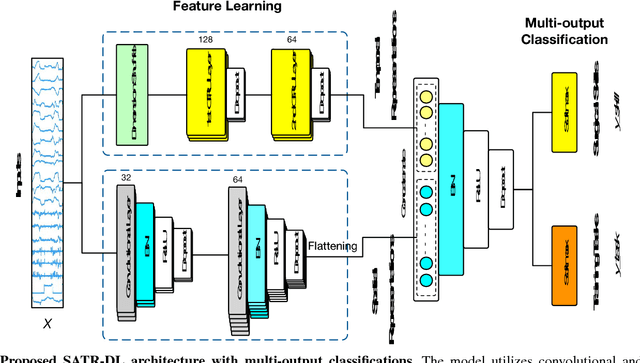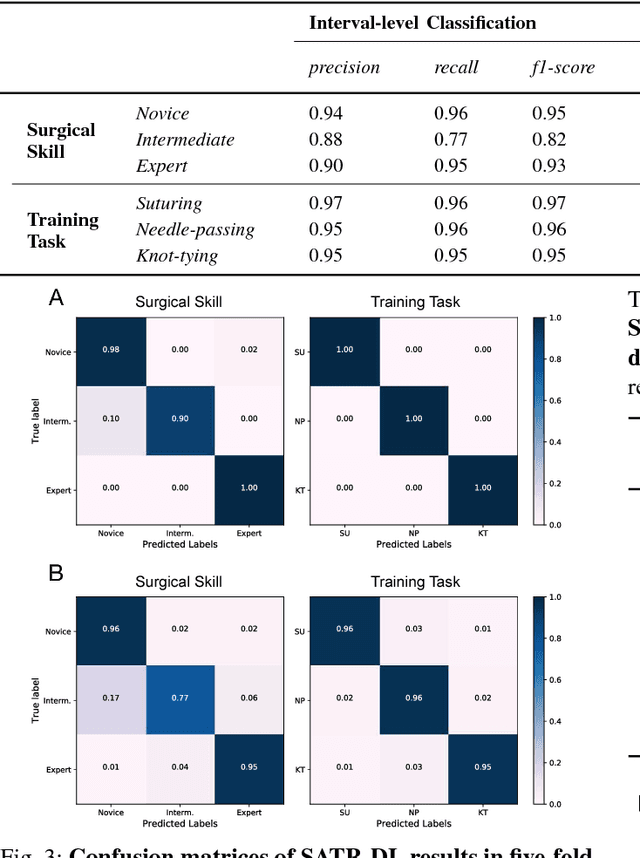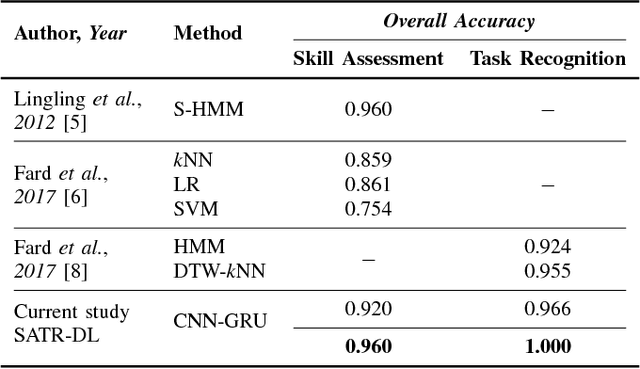SATR-DL: Improving Surgical Skill Assessment and Task Recognition in Robot-assisted Surgery with Deep Neural Networks
Paper and Code
Jun 15, 2018



Purpose: This paper focuses on an automated analysis of surgical motion profiles for objective skill assessment and task recognition in robot-assisted surgery. Existing techniques heavily rely on conventional statistic measures or shallow modelings based on hand-engineered features and gesture segmentation. Such developments require significant expert knowledge, are prone to errors, and are less efficient in online adaptive training systems. Methods: In this work, we present an efficient analytic framework with a parallel deep learning architecture, SATR-DL, to assess trainee expertise and recognize surgical training activity. Through an end-to-end learning technique, abstract information of spatial representations and temporal dynamics is jointly obtained directly from raw motion sequences. Results: By leveraging a shared high-level representation learning, the resulting model is successful in the recognition of trainee skills and surgical tasks, suturing, needle-passing, and knot-tying. Meanwhile, we explore the use of ensemble in classification at the trial level, where the SATR-DL outperforms state-of-the-art performance by achieving accuracies of 0.960 and 1.000 in skill assessment and task recognition, respectively. Conclusion: This study highlights the potential of SATR-DL to provide improvements for an efficient data-driven assessment in intelligent robotic surgery.
 Add to Chrome
Add to Chrome Add to Firefox
Add to Firefox Add to Edge
Add to Edge